Photo

Sikhism:
Another religion followed in India is Sikhism which originated in the early 1500s. The first of nine gurus, Guru Nanak, began teaching Sikhism which was a religion different from other known religions in India at the time, being Hinduism and Islam (Hafiz, 2014). The main principle of Sikhism is that everyone-men, women and children- are all equal before God, nobody is superior over another (Hafiz, 2014). Another ritual of this religion is that men and women cover their hair demonstrating their devotion to God (Hafiz, 2014). Another sign that separates Sikhs from other religions is the Kara, a circular bracelet, worn on the right arm of men and women symbolizing the unity of God. Another symbol of this religion is the Kirpan, which is a small dagger representing the duty to defend against injustice (Hafiz, 2014). The Kirpan is not a weapon in any state. Sikhs worship in gurdwaras and after there service everyone goes to Langar. After one prays at any gurdwaras, they must go to Langar which is a meal provided by the temple’s volunteers. The foods are of punjabi decent and are typically prepared by women and children. Sikhism is a religion that has been a part of Indian history since the 1500’s and offered a new perspective and belief of God.
Hafiz, Yasmine, and Lauren Markoe. "Sikhism 101: Facts, History, Beliefs, Gurus, Traditions, And Signs Of The Faith." The Huffington Post. TheHuffingtonPost.com, 31 Jan. 2014. Web. 9 Mar. 2016.
http://www.huffingtonpost.com/2014/01/31/sikhism-101_n_4698378.html
Picture: my own picture.
9 notes
·
View notes
Photo
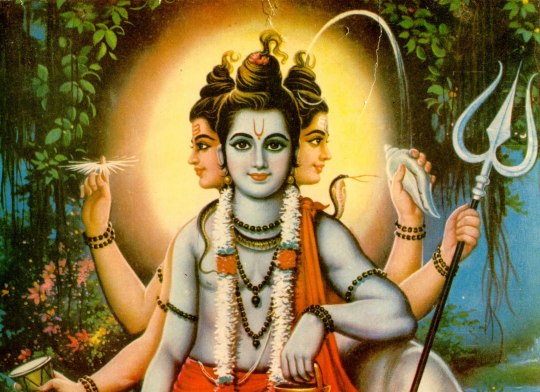
Hinduism:
Hinduism is embraced by a large majority of Indian people. This religion is made up of a set of ideas that influence art, rituals, ethics and overall social life. In the context of Hinduism, religion is not just something “to be believed in,” but “something to be done.” There is no hierarchy amongst Priests or an organized church. Hinduism is practiced everywhere, whether it be in a market, temple or at home. Shrines are prominent in many households, that portray the gods and goddesses. With this, they are decorated with fresh flowers, and often one can smell burning incense. Here, Hindus pray every morning, reading different passages from scriptures. Hinduism is used to represent the Absolute (eternal, space, casualty, with pure existence, consciousness and bliss.) Two important terms used in Hinduism are atman, meaning “self,” or brahma, meaning “holy power.” Hinduism also worships spirits of their land (forests, mountains and rivers). Karma plays a large role in Hinduism, as they are born into a specific caste, where their conditions and overall status of their lives are determined. Although karma is essential to Hindus, so is dharma, which are the specific duties and obligations that fall into a persons caste. For married hindu women, they are set to follow the duties of a wife, which is known as stri-dharma. Following dharma is Moksha, which is the salvation from the cycle of births and rebirths. This allows a person to become one with Brahma and the Truth. There are four main castes in Hinduism, which include: Brahmin, Kshatriya, Shudra, and Vaishya. They are arranged given their standing in purity. Hindu’s typically marry within their caste, and many days are christened to fasting and feasting. The photo above is symbolic of their faith and respect of nature. It focuses on the one they direct their prayers to, as well as their worship of the their land.
Haberman, Arthur, Sydney Eisen, and Adrian Shubert. The West and the World: Contacts, Conflicts, Connections. Toronto: Gage Learning, 2002. Print.
9 notes
·
View notes
Photo

Inventions and Achievements:
As history continued to expand across ancient India, so did their achievements as a country. The spinning wheel, was invented during this period, that was used to spin wool, yarn and thread. It even turned flax into linen. This resulted in the expansion of clothing, footwear, pillows, blankets, and other items. Originally, these products were made by hand or using hand cranks. In time, foot pedals were used as a means to simplify the process. Another invention was Calico (plain woven cotton) that included a pattern on the sides. Again, the woven cotton was used for clothing articles. Enhancing the clothing, were bangles, which were of great prominence on one’s wedding day. Bangles are most often made of gold and silver, and interspersed with different jewels or gems. These bangles are circular but not flexible, and on the brides wedding day, she wears as many bangles as she can, as they signify a union of one person and another, the same way a wedding ring does. If a Hindu woman’s husband dies, she breaks her wedding bangles in an act of mourning. Some men wear a bangle on their arm, ankle or wrist, called a Kara or a Keda. The photo is of the bangles previously discussed. These show wealth, class, and are a symbol of marriage. These became extremely popular following the inventions of the spinning wheel, and Calico.
Midgyett, Jessica. "Achievements/Inventions - Ancient India." Achievements/Inventions - Ancient India. Ancient India, n.d. Web. 09 Mar. 2016.
https://sites.google.com/site/ancientindiaoclassbatchelor/achievements-inventions-in-ancient-india
5 notes
·
View notes
Photo
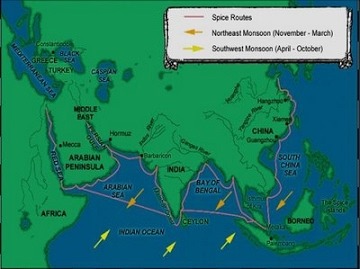
Government and the Economy:
Farming and trade were extremely important in ancient India, as they were the two main factors involved in the growth of India’s economy. Not only was farming a fundamental part of providing food to eat, but it allowed for trading, which kept the economy going. This also enhanced the government’s control, as they determined which products would be permitted in and out of the country. Indian’s typically traded items that they needed, which often included wheat, rice, cotton, gold, salt, pottery, silk and spices. With the government at the helm, the trade routes were safer, and road systems improved in size. Farmers also did not have to pay taxes, and the overall security was advanced. From the eleventh to eighteenth century, India had the largest economy worldwide. With the significant growth in the economy, many job opportunities appeared. Jobs like carpenters, doctors, barbers, weavers and goldsmiths became popular. The photo above portrays the spice trade routes across India. One can see the importance of the different bodies of water that are present, as they allow for a growth in India’s economy from an early era.
Shiu, Jade. "Government and Economy - Ancient India." Government and Economy - Ancient India. Ancient India, n.d. Web. 09 Mar. 2016.
https://sites.google.com/site/ancientindiaoclassbatchelor/government-and-economy
5 notes
·
View notes
Photo
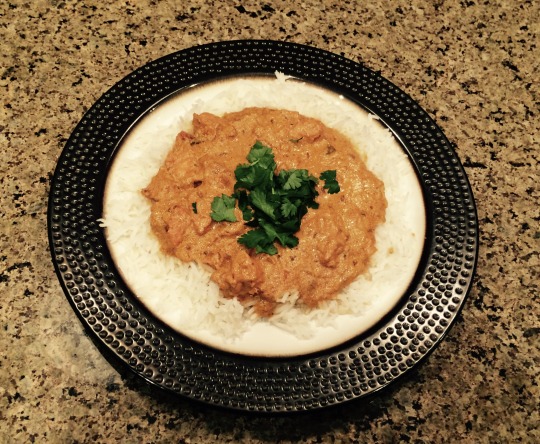
Food:
India has always been known as place that has thousands of diverse spices. In terms of culture, Indian foods are extremely unique when compared to others foods from Europe in the 15th century. The image above shows a well known and popular dish, authentic Butter Chicken(also known as Murgh Makhani) served on basmati rice and coriander on top. In India, this dish is referred to as a Sabji which is basically a dish based on onions, ginger and tomatoes. It is a food that can be made with meat or vegetables mixed with various spices and typically with a gravy. Many Indian dishes are Sabji dishes. Indian foods are generally spice heavy since the many spices found in India can be used to preserve foods. The climate in India is extremely hot therefore foods can spoil at increasingly high rates. Also, there are different climates all over India which all certain foods to grow and others cannot. From that, some people have an abidance of wheat whereas others regions would have an abundance of fruits. Other important dishes served in India during the 15th century are primarily vegetable based foods. In some religions, people are limited to eating vegetables. An example of a vegetable dish is “Aloo Gobi Sabji.” This is a dish that combines potatoes, cauliflowers and a mixture of spices. Another extremely popular dish is dhal which is a lentil soup infused with spices for extra flavour.
Verghese, Roopa. "International Cuisine." History of Indian Cuisine, Spices, Religious Influence, Spices of India. 2007. Web. 07 Mar. 2016. http://www.briskwalkers.com/cuisine/international-cuisine/
Picture: my own picture.
3 notes
·
View notes
Photo

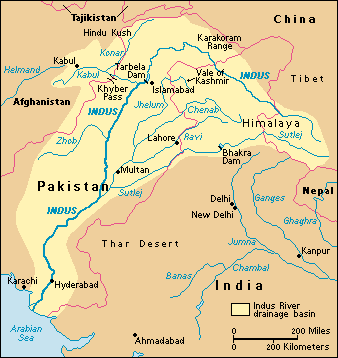
Geography:
Ancient India’s geography is very complex. There are rivers, The Indian Ocean and the Arabian Sea. The main rivers are the Ganges, Brahmaputra, Saraswati, Gidavari, Krishna and Yamuna. The Bay of Bengal is also there. Out of all the rivers in ancient India, the most important was the Saraswati, as it, along with other bodies of water were used for transportation, food and resources. As for land, there are the Himalayan Mountains to the North, the Deccan Plateau near the Western and Eastern Ghats, and the Thar desert to the West. The photo on the top shows the bodies of water that surround India, where the importance of transportation is based. The next photo, is a map of ancient India by land, where the rivers, mountains, deserts and plateaus are located.
O-Macal, Marisa Michael. "Geography - Ancient India." Geography - Ancient India. Ancient India, n.d. Web. 08 Mar. 2016.
https://sites.google.com/site/ancientindiaoclassbatchelor/anicient-india-s-geography
1 note
·
View note
Photo

Entertainment:
Entertainment in ancient India varied amongst children and adults. Children tended to play with whistles and small carts so that they could roll down hills. They even played with toys like a monkey attached to a string that they could pull around. Ancient Indians even enjoyed the relaxation of public pools, and on rare occasions, they would take part in religious ceremonies and rituals, where they would dance. Dancing allowed for different peoples to connect with the gods, their faith and helped them grow as citizens. The photo above represents the dance culture and the dress of those during this time period. The spiritual connection that dancing brings is a main source of entertainment, and a birth of a new lifestyle.
"Culture & Daily Life - Ancient India." Culture & Daily Life - Ancient India. Ancient India, n.d. Web. 08 Mar. 2016.
https://sites.google.com/site/ancientindiaoclassbatchelor/culture-daily-life
2 notes
·
View notes
Video
youtube
Weddings:
The most common religions followed in India are Hinduism, Sikhism, Christianity and Islam. Each of these religions vary significant through their marital ceremonies and rituals. The current religious marriage ceremonies have been used throughout history. Hinduism is the most common Indian wedding of the 15th century. Indian weddings are known to be extremely lengthy especially through pre and post nuptial events. The video above shows a typical Hindu wedding and highlights the colours, fashions and process of the marriage ceremony. There are many stages that make up the process of a Hindu wedding. The first step is called the “Jayamaala” which is when the groom and his family meet the bride and her family (Prinja, 2009). This entire interaction occurs at the bride’s residence which is where the wedding will take place. A red powder is applied to both the bride and groom’s foreheads, by family members, marking the start of their marriage (Prinja, 2009). This powder can be clearly seen in the video when applied to the bride’s forehead. Also, they exchange garlands known as jayamaala which symbolize that they both willingly want to marry (Prinja, 2009). The next ceremony is “Gau Daan and Kanya Pratigrahan” where the groom’s mother gifts a necklace(often times a family heirloom) to the bride (Prinja, 2009). This part of the wedding is important because the bride’s father has publicly expressed that the daughter wishes to marry and wants the groom to accept. Another step is “Paanigrahan” which is the exchanging of vows (Prinja, 2009). “Shilarohan and Laaja Homa” then follows where the couple walks around a sacred fire four times (Prinja, 2009). At this time, the red powder is applied by the groom to the bride showing their marriage. Also, barley is poured into the fire symbolizing that the couple will work for their successes including food(this step can be seen in the video). The next ritual is called “Sapta-Padi” where the couple recites a prayer for each seven steps they take together (Prinja, 2009). The steps represents a good faith for their marriages(food, strength). The final ceremony is “Ashirvada” symbolizing the blessing of the couple by elders and priests (Prinja, 2009). The end of this video shows the bride leaving her parent’s residence which is the final component of the marriage. This part can also be seen in the video above.
Prinja, Nawal K., Dr. "Hindu Weddings." Religions. BBC.com, 24 Aug. 2009. Web. 7 Mar. 2016. http://www.bbc.co.uk/religion/religions/hinduism/ritesrituals/weddings.shtml
8 notes
·
View notes
Photo

Language:
An important language that sprouted around 1500 BC was the Sanskrit language. Sanskrit comes from the Indo-Aryan language and is the primary language spoken in Hinduism, Buddhism, and Jainism. There are different forms of the language, like the Vedic Sanskrit and Rigveda. Sanskrit incorporates many aspects of culture, as it is used when creating poetry and drama, as well as analytical uses (scientific and technical) in Hinduism. One’s knowledge of Sanskrit depicted their standing in social class. The photo present shows the written language of Sanskrit, that is used in communication among others, as well as for religions purposes. This signifies power, as knowledge of the language brings one closer to God.
"Indian Language - Sanskrit." Crystallinks. Crystallinks, n.d. Web. 08 Mar. 2016.
http://www.crystalinks.com/sanskrit.html
3 notes
·
View notes
Photo
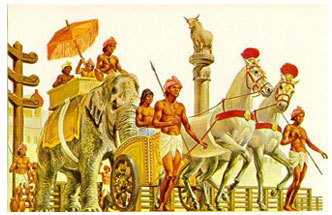
Military and Tools:
Around 1500 BC, the Indus River Valley civilization crumbled following the rise of agriculture. The Aryans (originating from southern Russia and central Asia) invaded the land, while food production as well as civilizations would spread across India. Most warfare present at this time was between Indian kingdoms. The Himalayas separated India from the rest of Asia greatly, leaving the remaining kingdoms at war. The purpose of the war was the battle for dominance. As the military advanced, their modes of transportation and weapons changed as well. Elephants became an important factor in military development, and long bows were used when fighting. The Rajputs who ruled the desert land in the northwest, were known as “skilled mountain warriors.” The mountains in the north were ruled by the Nepalese. They were one of the tougher kingdoms. It was here that Buddha was born. The photo above presents the ancient shirtless military, with their bows as weapons, and horses and elephants. This signifies the growth of military and the birth of new weapons that will soon be used in coming wars.
"Aryans." In India, Aryan Civilization, Aryan People. India History, n.d. Web. 08 Mar. 2016.
http://www.indhistory.com/aryan.html
"The Military of Ancient India." Ancient India Military. AncientIndia.com, 2012. Web. 08 Mar. 2016.
http://ancientmilitary.com/ancient-india-military.htm
3 notes
·
View notes
Video
youtube
Architecture and Status:
Buildings in the 15th century in India were grand and displayed wealth through the many decorations and high ceilings (Zimmermann, 2015). The video above shows a building, that is similar to those created in the 1400s and 1500s in India. The Catholic churches found in Europe during the 1500s seemed to publicly display their wealth. This could be seen through the gold decoration throughout the Catholic church as decorations. This building from the video is very similar to the appearance of the Catholic church in the sense of promoting and showing wealth. Another method of showing status in India was seen through the detailed flooring. In this video, when the women are dancing, primarily lying on the floors, one can see the precision and colourful patterns detailed onto the tiles. The walls and ceilings are also accessorized with sparkles and glitter which, like the Catholic church, show power and superiority. Wealth can also be seen on the clothing of the main woman dancing. Also the bright and vibrant colours seen on the clothing is an example of displaying wealth (Zimmermann, 2015). She is wearing an excess of gold, jewels and her clothing are handmade with intricate details (Zimmermann, 2015).
Zimmermann, Kim Ann. "Indian Culture: Traditions and Customs of India." LiveScience. TechMedia Network, 30 Jan. 2015. Web. 8 Mar. 2016. http://www.livescience.com/28634-indian-culture.html
"Maar Dala." YouTube. YouTube, 1 Oct. 2015. Web. 07 Mar. 2016. https://www.youtube.com/watch?v=kE3Vemj4VdI
9 notes
·
View notes
Photo
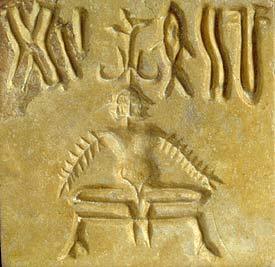
The Birth of India:
Dating back to around 2500 BC, the Indus valley civilization set their place in the known holy land of India. These same people were thought to be Dravidians (those who originally inhabited northern India) The descendants of the Dravidians later migrated to the south of India. With this civilization soon crumbling, it resulted in a culture based on commerce and trade in agriculture, thus changing the ecological aspect of the land. Following the Indus Valley civilization, the Vedic civilization appeared, laying out the new religion of Hinduism. During the 5th century, fairly large areas were united under Ashoka, who later converted to Buddhism. With this, the religion spread across Asia. This photo represents the Indus Valley civilization, where their messages are engraved into stone. It signifies their views on religion and unity, as they connect with the God that they believe in.
"History of India." History of India. Facts About India, n.d. Web. 08 Mar. 2016.
http://www.facts-about-india.com/history-of-india.php
Yamraaj. "History of India." Brief History Of India. Brief History of India, n.d. Web. 08 Mar. 2016.
http://historyindia.org/index.php?content_id=20#21
1 note
·
View note
Video
youtube
Emperor Akbar of India:
The Mughal Emperor Akbar of India was a just ruler known for his goodness and wisdom to all people of India. Akbar become the emperor at the young age of 13 and throughout his reign he followed his central principle of SulheKuhl(peace to all) (Szczepanski, 2014). The Mughal empire rules parts of India and Pakistan where most people practiced the Hindu faith. The video above shows a movie trailer(Jodhaa Akbar) of the marriage between the Muslim leader, Akbar, to the first of his 36 wives, a Hindu princess, Jodhaa Bai (Szczepanski, 2014). The marriage was conducted to unify Hindus and Muslims throughout India. One of the many accomplishments of Emperor Akbar was the removal of yearly taxes, known as jizya, onto “non-Muslims”(Szczepanski, 2014). From this courageous act, he lost money but gained respect and favours from Hindus throughout India. Akbar believed that no religion is superior over another and everyone should have the right to practice their own faith. In 1582, Akbar sent Philip II of Spain a letter stating that he should have tolerance about different religions and not murder people for following a different faith (Szczepanski, 2014). This showed Emperor Akbar’s true personality and ability to accept others of differing religions and backgrounds. It was also known that Akbar enjoyed talked to other people who practiced various religions to learn about philosophy and teachings he would never know of if only restricted to his religion (Szczepanski, 2014). The video above highlights the importance of acceptance between two unlikely monarchs. The legend is that these Akber and Jodhaa ended up falling in love with each other which was very uncommon in arranged marriages especially between people of differing religions.
Szczepanski, Kallie. "Who Was Akbar the Great?" About.com Education. 16 Dec. 2014. Web. 8 Mar. 2016. http://asianhistory.about.com/od/india/p/akbarthegreatbio.htm
"Jodhaa Akbar - Official Trailer (English Subtitles)." YouTube. YouTube, 12 Apr. 2010. Web. 07 Mar. 2016. https://www.youtube.com/watch?v=5B_X2xOBpFc
8 notes
·
View notes
Photo
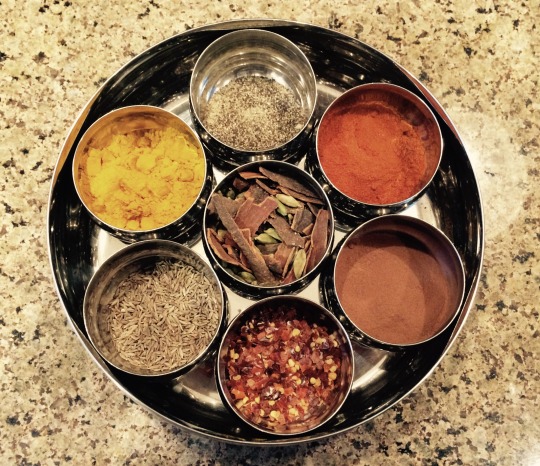
Spices:
The spice trade was one of the largest industries that occurred during the 1400s and 1500s. India is globally known as one of the greatest resources for spices. Throughout history, many countries throughout the world would pay top dollar for precious spices. At a point, cinnamon was worth more than gold. The picture listed above displays a selection of the many spices that are cultivated in India. They include: black pepper, red chili powder, cinnamon bark, cardamon, red chili flakes, cumin seeds and turmeric. There seemed to be a need and extreme desire of spices from India, and in an attempt to cut back on costs, many explorers set out to find another route to get spices (Harrison, n.d). The Arabs dominated and controlled the spice trade before the Europeans found a sea route to India (Harrison, n.d). Examples of explorers who initially set out to find spices include Christopher Columbus, Ferdinand Magellan and Vasco da Gama (Harrison, n.d). The Indian economy was also stimulated by the spice trade as they generated a constant income. Also, in the 1400s, people would trade items and possessions for spices. The spices were very important to common day life in India since they were used to preserve foods (Harrison, n.d). Since the climate is extremely hot, foods would go bad very quickly where spices could help pro long the life span of vegetables and meats.
Harrison, John, Dr. "History of Spices in India." The Spice Journal History of Spices in India. Web. 07 Mar. 2016. http://thespicejournal.com/spice-producing-countries/india/history-of-spices-in-india/
Picture: my own picture.
#india#spices#spicetrade#indiaspices#spiceland#cinnamon#cardamon#chilliflakes#chilipowder#cumin#tumeric#nutmeg#blackpepper#cinnamonbark#gaarmmasala
2 notes
·
View notes
Video
youtube
Gender Roles:
Similarly to many cultures, men dominated over women in many aspects of life in India. For example, parents would pray for a baby boy instead of a daughter for a son could, in theory, pass on the familial legacy. This was very prevalent throughout Indian history including the 15th century. The video above shows a women, wearing beautiful clothing with expensive jewels dancing in front of a group of men. This situation was extremely common in Indian culture especially in times where gender rights were non existent. Women were looked to as entertainment in some regions in India however in other parts women were strictly banned and confined into living only in a house. Another example of the unfair gender roles is in terms of arranged marriages. These unions are decided typically by the parents of the man and woman who will soon remarried off to someone. These situation of parading skills, as seen in the video, is a strategy used my many families with daughters. In a sense, these daughters would be trying to gain the attention and desire of a man. From that, a man may wish to marry that woman dancing solely based on her appearance. The current gender roles in India have been extremely saddening since couples want a baby boy instead of a girl, they are getting abortions whenever the fetus tests positive to being a female. These negative acts have been reducing the male to female ratio in India. There are far more males than females lowering the average amount of marriages per year.
Gierstorfer, Carl. "Where Have India's Females Gone?" Pulitzer Center. 11 Sept. 2013. Web. 09 Mar. 2016. http://pulitzercenter.org/reporting/asia-india-new-delhi-rape-women-sex-ratios-culture-sons-education
Desai, Santosh. "The Logic of Arranged Marriage in India - Times of India." The Times of India. 15 Mar. 2009. Web. 09 Mar. 2016. http://timesofindia.indiatimes.com/santosh-desai/city-city-bang-bang/The-logic-of-arranged-marriage-in-India/articleshow/4268676.cms
"Umrao Jaan (2006) - Salaam (English Subtitles)." YouTube. YouTube, 8 Aug. 2007. Web. 06 Mar. 2016. https://www.youtube.com/watch?v=q0rK7b-yJ1o
8 notes
·
View notes
Photo
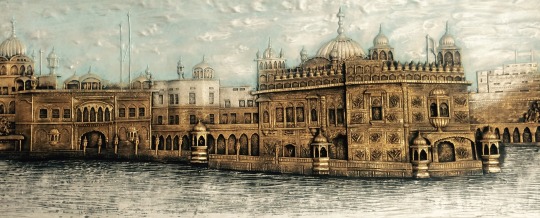
Sri Harmandir Sahib:
Commonly referred to as the Golden Temple, it is the central Gurdwaras of Sikhism (Khalsa, 2015). A Guruwara is a temple or place of worship for people practicing Sikhism. This temple is located in Amritsar, India and is one of the most well known buildings in India. What makes this temple so unique when compared to others is that entrenched in it’s rules, anyone, practicing any faith is welcome to worship in this Guruwara. It is widely known for not discriminating against anyone based on race or religious background. The idea to create a communal place of worship was first thought of by Guru Arjan however construction of the Gurdwara first began in 1570 (Khalsa, 2015).The architecture of this building is astounding as it holds over 750 kg of gold in it’s exterior. Other components of the temple are copper, iron, wood, glass and jewels. From its first opening in 1577 to 2016, it has remained a beacon of peace and acceptance for anyone of any faith.
Khalsa, S. (2015, December 11). Historic Timeline of Golden Temple and Akal Takhat. Retrieved March 07, 2016, from http://sikhism.about.com/od/history/a/Golden_Temple.htm
Picture: my own picture.
#india#goldentemple#sriharmandirsahib#gurdwaras#temple#sikhism#religion#worship#architechture#beauty#gold#symbolofpeace
4 notes
·
View notes
Video
youtube
Fashion:
Throughout the history of India, fashion was very prevalent and important in terms of social hierarchy. Clothes worn by women in India were and still are very colourful and typically hand made. Especially in the 15th and 16th centuries, all clothing were handmade, decorated with beads, sparkles and jewels (Dressing the Indian Woman through History, 2014). Wealthy people in India wore outfits that were extremely colourful and vibrant accessorized with only the finest of gems. As seen in the video above, the women dancing in this clip are shown and portrayed as wealthy people since they have mehndi on their hands/feet, wearing very intricately designed “Sarees” and their excessive amount of jewelry. Fashion in many countries and societies are very essential in portraying your class. In India, it was very important to display your wealth publicly. Sometimes in large community gatherings, these dancing ceremonies, like the video above, are a great opportunity to display a families wealth. On the other hand, these dances are also used to promote a daughters eligibility for marriage since in India, arranged marriages were very common.
"Dola Re Dola Re - Devdas English Subtitles HD." YouTube. YouTube, 13 Apr. 2010. Web. 07 Mar. 2016.
https://www.youtube.com/watch?v=70nNB-mxMZo
"Dressing the Indian Woman through History." BBC News. 6 Dec. 2014. Web. 07 Mar. 2016. http://www.bbc.com/news/magazine-30330693
8 notes
·
View notes